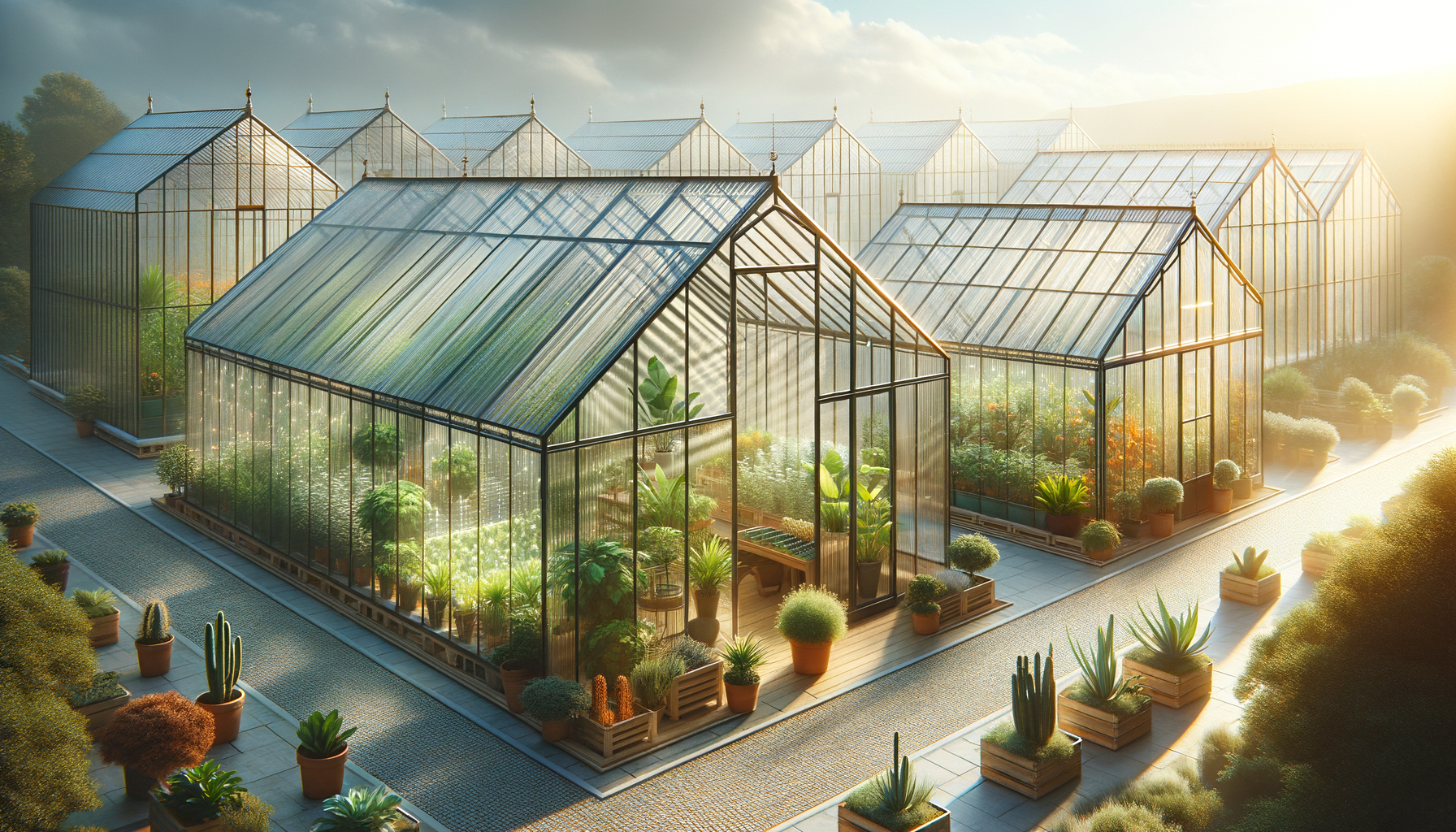Understanding the Benefits of Glass Greenhouses
Glass greenhouses have been a staple in gardening and agriculture for decades, offering a controlled environment that can significantly enhance plant growth. The primary advantage of using glass is its excellent light transmission, which is crucial for photosynthesis. Unlike some other materials, glass does not degrade over time, ensuring that your plants receive consistent light levels throughout the year.
Moreover, glass greenhouses provide a robust structure that can withstand various weather conditions. This durability makes them a long-term investment for serious gardeners. They also offer better insulation compared to plastic, helping maintain a stable temperature inside the greenhouse. This is particularly beneficial in regions with fluctuating weather patterns, as it allows for year-round gardening.
Another significant benefit is the aesthetic appeal of glass greenhouses. They can enhance the visual appeal of your garden, adding a touch of elegance and sophistication. Many gardeners appreciate the clear view of their plants, which can be both motivating and rewarding. Whether you’re growing vegetables, flowers, or exotic plants, a glass greenhouse can be a valuable addition to your gardening efforts.
Cost-Effective Options for Glass Greenhouses
Building a glass greenhouse doesn’t have to break the bank. There are several cost-effective options available that can meet the needs of budget-conscious gardeners. One approach is to consider modular greenhouse kits. These kits often come with all the necessary materials and instructions, making them a convenient choice for beginners. They are typically less expensive than custom-built options and can be assembled with basic tools.
Another way to save money is to opt for second-hand materials. Many gardeners have successfully repurposed old windows and doors to create charming and functional greenhouses. This not only reduces costs but also promotes sustainability by reusing materials that would otherwise go to waste. Additionally, sourcing materials locally can help cut down on transportation costs, further reducing the overall expense.
For those willing to invest some time and effort, DIY projects can be an excellent way to build a glass greenhouse on a budget. With a plethora of online resources and community forums, you can find detailed guides and tips from fellow gardeners who have embarked on similar projects. By taking a hands-on approach, you can customize your greenhouse to fit your specific needs and preferences, all while keeping costs manageable.
Choosing the Right Location for Your Greenhouse
The location of your greenhouse is a crucial factor that can influence its effectiveness. Ideally, it should be placed in an area that receives ample sunlight throughout the day. This ensures that your plants get the necessary light for growth and reduces the need for artificial lighting, which can increase energy costs.
It’s also important to consider the proximity to water and electricity sources. Having easy access to these utilities can simplify the maintenance of your greenhouse, especially if you plan to install heating or irrigation systems. Additionally, the site should be level and have good drainage to prevent water from pooling around the structure, which could lead to damage or rot over time.
Another consideration is the direction of prevailing winds. Positioning your greenhouse with its longest side facing the wind can help reduce heat loss and improve energy efficiency. This setup can also minimize the risk of damage during storms or high winds. By carefully selecting the location of your greenhouse, you can maximize its potential and create an optimal environment for your plants.
Maintaining Your Glass Greenhouse
Regular maintenance is key to ensuring the longevity and efficiency of your glass greenhouse. One of the primary tasks is to keep the glass clean. Dirt and algae can accumulate on the surface, reducing light transmission and affecting plant growth. A simple solution of soap and water can be used to clean the glass, but it’s important to avoid harsh chemicals that could damage the material.
Inspecting the structure for any signs of wear or damage is also essential. Over time, seals and joints can degrade, leading to drafts and heat loss. Regular checks can help you identify and address these issues before they become significant problems. Additionally, ensuring that the ventilation system is functioning correctly is crucial for maintaining a stable internal environment.
Seasonal adjustments may also be necessary to accommodate changing weather conditions. In the summer, shading or ventilation may be needed to prevent overheating, while in the winter, additional insulation or heating might be required to maintain optimal temperatures. By staying proactive with maintenance, you can ensure that your glass greenhouse remains a productive and enjoyable space for gardening.
Innovative Uses for Glass Greenhouses
While glass greenhouses are traditionally used for growing plants, their versatility allows for a range of innovative uses. One popular trend is transforming them into outdoor living spaces. With some creative design and furnishing, a greenhouse can become a tranquil retreat for reading, dining, or simply enjoying the beauty of nature.
Another exciting use is as an educational tool. Schools and community centers can utilize greenhouses to teach children and adults about plant biology, sustainability, and environmental stewardship. These spaces can serve as hands-on learning environments where participants can engage with nature and develop a deeper understanding of ecological principles.
For those interested in culinary pursuits, a glass greenhouse can be the perfect setting for a kitchen garden. By growing herbs, vegetables, and fruits, you can have fresh produce at your fingertips, enhancing your cooking and promoting a healthy lifestyle. The possibilities are endless, and with a bit of imagination, a glass greenhouse can become a multifunctional asset that enriches your home and garden.




Leave a Reply